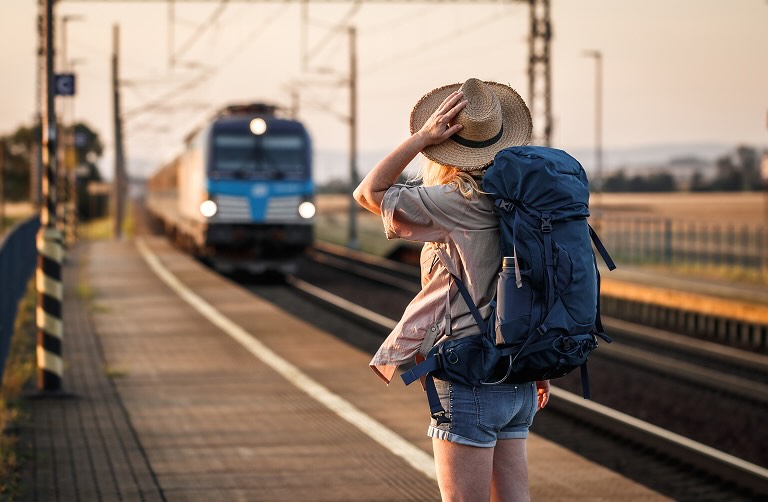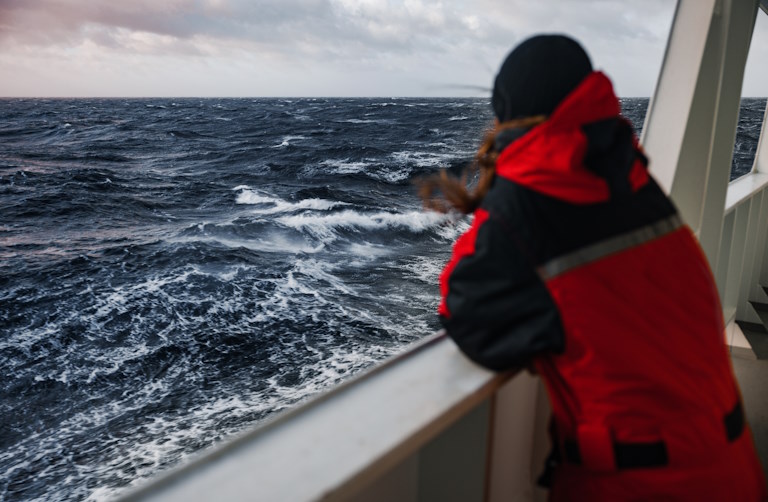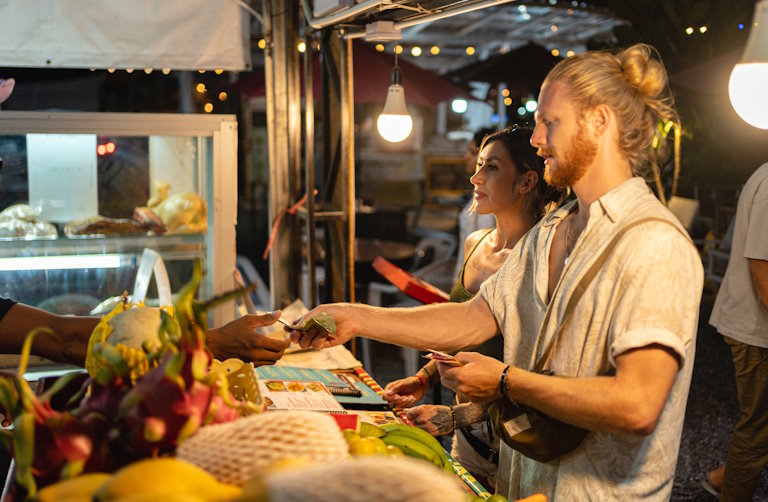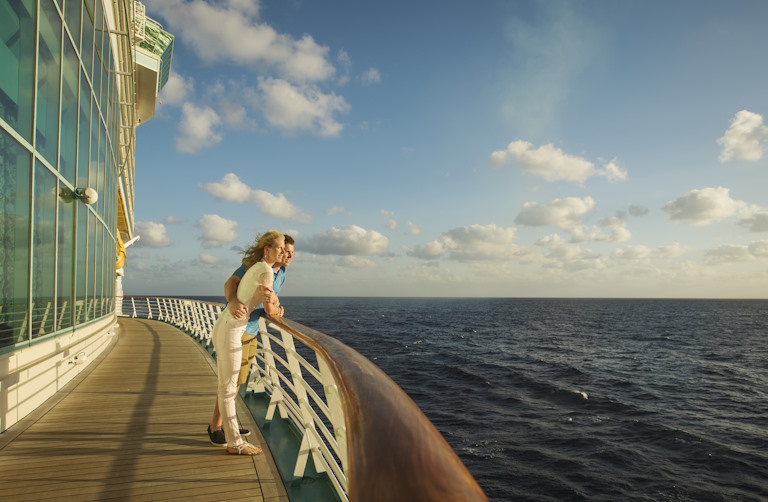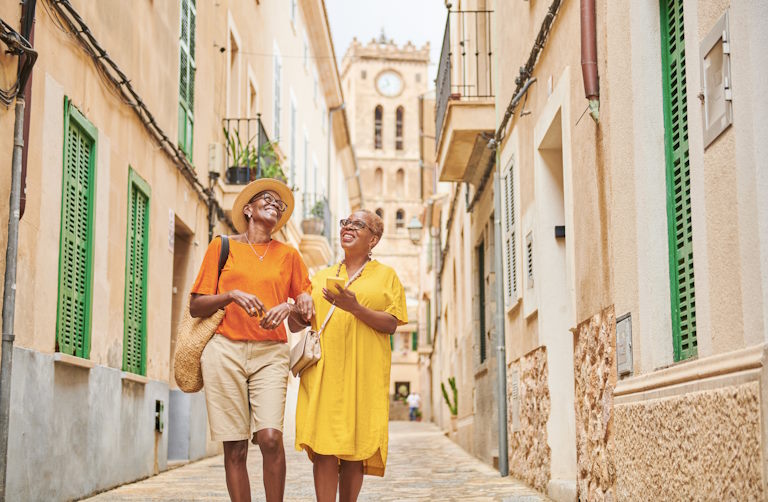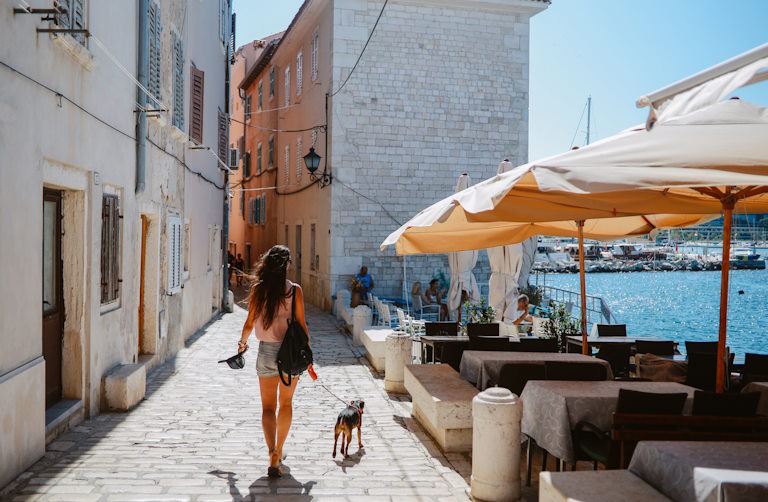Travel Insurance for Portugal
Explore Portugal with confidence and check out some of the things travel insurance may cover.
- As featured in:
As featured in:
Article at a glance
- Medical costs in Portugal can be high for non-EU visitors; travel insurance may help cover hospital stays, emergency care, and repatriation.
- Australian travellers, including those travelling for work/volunteering, staying for more than 90 days should check visa requirements and policy limits.
- Adventure activities covered: surfing, hiking, cycling and more (depending on plan and options selected).
- Always read the Product Disclosure Statement (PDS) to understand what’s included and excluded. Cover is subject to the terms, conditions and limitations of the PDS.
- No Reciprocal Health Care Agreement exists between Australia and Portugal — travel insurance for overseas medical expenses should be strongly considered.
Portugal offers a mix of medieval history and vibrant culture with a side of blissful beaches and fantastic fare. But before you hop your flight, consider how travel insurance for Portugal might help protect your trip.
From medical emergencies and travel delays to stolen luggage and natural disasters, your dream Portugal holiday can flip on its head quicker than a flight delay announcement.
- What's covered
- Why should I consider travel insurance for Portugal?
- Does travel insurance cover medical care in Portugal?
- What to look out for when travelling to Portugal
- What’s not covered
- Travel tips for Australians in Portugal
- FAQs for a trip to Portugal
What's covered
World Nomads travel insurance for Portugal offers cover (up to the policy limits) for:
- Delayed or stolen baggage
- Cancellation and trip interruption
- Natural disaster
- Overseas emergency medical, including medical evacuation and repatriation
- More than 220 activities and sports
- Some coronavirus-related events
- 24/7 Emergency assistance
We offer two travel insurance plans: Standard and Explorer. Each policy offers different levels of coverage and benefits. Consider the PDS and whether this product is right for you.
Why should I consider travel insurance for Portugal?
Travel insurance for a Portugal trip may come in handy for unplanned events like:
- Overseas medical emergencies: Lisbon is a great city to explore on two wheels, but if you have a hiking accident and fracture your ankle (or worse) travel insurance may help cover costs.
- Stolen belongings: Pickpocketing is a common reason for travel insurance Europe claims, especially in Portugal's busy areas like Porto's São Bento Station.
- Trip cancellation: If your trip is cancelled due to unforeseen circumstances, like a natural disaster, our travel insurance for Portugal may be able to help recover costs.
- Luggage delays: If you arrive in Farro but your luggage doesn’t, our travel insurance may help put clothes on your back.
- Adventure activities: Surfing in Algarve, wine tasting in Douro, or hiking in Madeira? We cover more than 220 activities, so you can explore more.
This is a summary only. Cover is subject to the terms, conditions and limitations of the PDS.
Planning to travel to multiple European destinations? Explore our multi-trip travel insurance article.
Get an instant travel insurance quote.
Additional European travel insurance cover pages for Australian residents:
Does travel insurance cover medical care in Portugal?
Without a Reciprocal Health Care Agreement between Australia and Portugal, travel insurance for overseas medical emergencies should be considered.
Just keep in mind that travel insurance covers overseas medical emergencies, not routine or ongoing care. It may include cover for GP visits, hospitalisation, emergency evacuation, repatriation, and more, if you suffer a sudden illness or serious injury while on your trip.
Call the 24/7 Emergency Assistance team first if you’re sick or injured abroad.
What to look out for when travelling to Portugal
Pickpockets and scammers
Stay alert in crowded tourist hotspots like Lisbon's Tram 28 and Porto's bustling Ribeira waterfront. If you fall victim to a crime, report it immediately to authorities.
Ocean safety
The ocean is a magical place, but it can also be a dangerous one. Portugal's Atlantic coast has powerful rip currents, especially around the Algarve and Nazaré. Always swim in patrolled areas and heed warnings.
Travel to Portugal during shoulder seasons
Travel during Portugal's shoulder seasons of Spring (March to May) and Autumn (September to November) and you'll be rewarded with cheaper accommodation and fewer crowds.
What’s not covered
Travel insurance is not blanket cover-all and there are some things we do not cover. It’s important to read your PDS carefully to ensure you fully understand what is and isn’t covered. Some of the things we do not cover include:
- Personal belongings that are lost or stolen while unattended.
- Existing medical conditions unless they are automatically covered.
- Participating in sports or activities that are excluded, or any activity where you haven’t selected the appropriate level of cover and paid the additional premium, like skiing or snowboarding.
- Incidents resulting from reckless behaviour, or if you’re under the influence of drugs or alcohol.
This is a summary only. Cover is subject to the terms, conditions exclusions and limitations of the PDS. Contact us if you have questions about coverage or exclusions.
Travel tips for Australians in Portugal
Embrace relaxed evenings and late dinners
While Australians typically dine around 7pm, Portuguese restaurants don't even open until 7pm. Embrace the late-night dining culture and enjoy leisurely meals that often stretch past 10pm. Note: Tipping 10% is standard.
Must-visit destinations in Portugal (beyond Lisbon and Porto)
While Lisbon and Porto are essential stops, expand your itinerary to include quieter stops like Sintra, Óbidos, and Sagres where you’ll discover fairy-tale palaces, medieval charm, and breathtaking natural landscapes.
EU entry and exit travel requirements coming soon
The new European Entry/Exit System (EES) for all non-EU nationals, including Australians, travelling in or out of the Schengen Area is expected to start in October 2025. Stay informed with Smartraveller for country-specific alerts.
This is not a full list of what's covered and not covered. Other terms, conditions, limitations and exclusions may apply so please read your PDS carefully. If you’re not sure if something is covered or how to claim, contact us and we’ll let you know.
FAQ for a trip to Portugal
Here are our most frequently asked questions about travel insurance for Portugal. You can also find the answers to other questions in our Helpdesk or you can ask our customer service team
-
Do I need a visa to visit Portugal from Australia?
Australian citizens don't need a Schengen visa if they’re travelling in Portugal for 90 days or less. However, if you plan to extend your trip you’ll need to apply for a Schengen visa. For any information related to the latest travel updates and travel requirements visit smartraveller.gov.au
-
When should I buy travel insurance for Portugal?
Consider buying travel insurance as soon as you book your flights. This way, you may also be covered for cancellations that occur before departure.
-
How do I make a claim?
You can make a claim online from anywhere in the world.
Travel Insurance Benefits: how we can take care of you
Trip Cancellation
Been working hard for your trip?
We'll work hard to protect it.
Trip Protection
- Unexpectedly hospitalized?
- Travel companion unfit to travel?
- Close relative suddenly dies?
We’ve got your back.
Emergency Medical Expenses
Feeling fit and healthy? What if you get sick or injured?
Take the pain out of medical or dental costs.
Emergency Medical Insurance
- Need medication?
- Accidentally injured?
- Suddenly sick?
We’ve got your back.
Emergency Medical Transportation
Know where the nearest hospital is?
Don’t stress, we’ll get you there quickly.
Evacuation and Repatriation
- Hurt abroad?
- Need a hospital urgently?
- Medevac home?
Help starts here.
Protect your gear
Love photography, filming or sport?
Cover your bags, tech or gear.
Protect your gear
- Passport or tech stolen?
- Airline lost your gear?
- Bags delayed?
Help starts here.
- Emergency Overseas Medical & Dental Expenses
- Emergency Medical Evacuation & Repatriation
- Trip Cancellation or Interruption
- 24-Hour Assistance Services
- Baggage
- And more (depending on your country of residence)
24/7 emergency assistance
Whether you need medical assistance or emergency evacuation, our teams are available 24 hours a day, 7 days a week, 365 days a year before and during your trip.
Are you in need of emergency assistance right now?
Contact the teamAwards and accolades
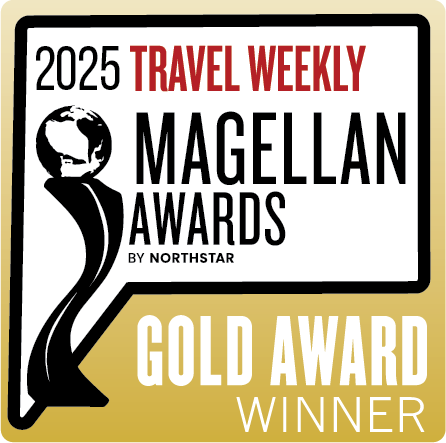
Travel Insurance –
Overall-Product
Gold Award Winner
Travel Magellan Awards by Travel Weekly, 2025

Travel Services Marketing -
Campaign-Advertising/Marketing Campaign
Gold Award Winner
Travel Magellan Awards by Travel Weekly, 2025
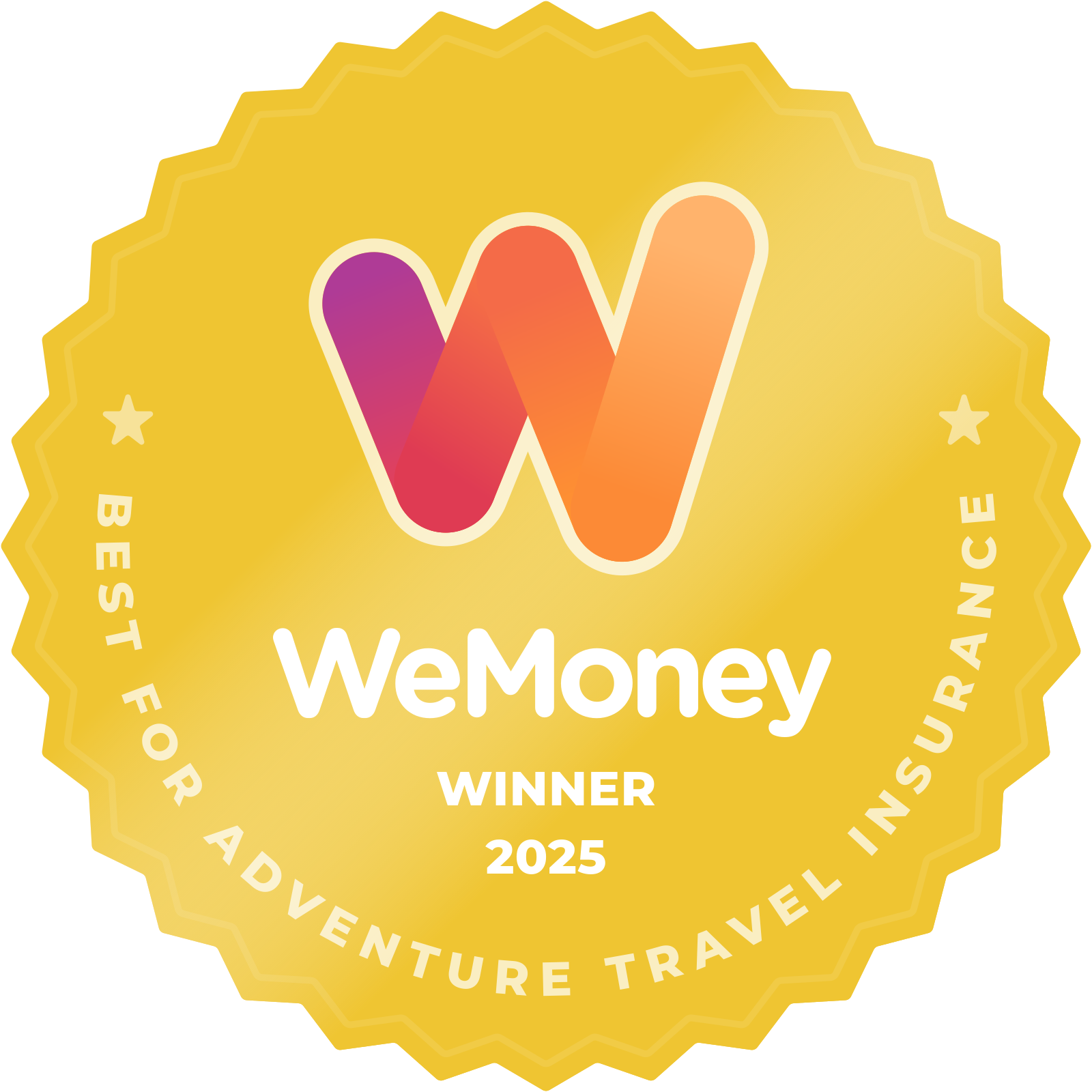
Best for Adventure Travel Insurance Winner
WeMoney travel insurance awards, 2025

Best for Adventure Travel Insurance Winner
WeMoney travel insurance awards, 2024

GRIST Service Excellence Award Winner
Auscontact awards, 2024

Customer Experience Initiative of the Year Process Transformation Winner
Auscontact awards, 2023

Social Impact award for accomplishments for The Footprints Network Finalist
The Bessie awards, 2024
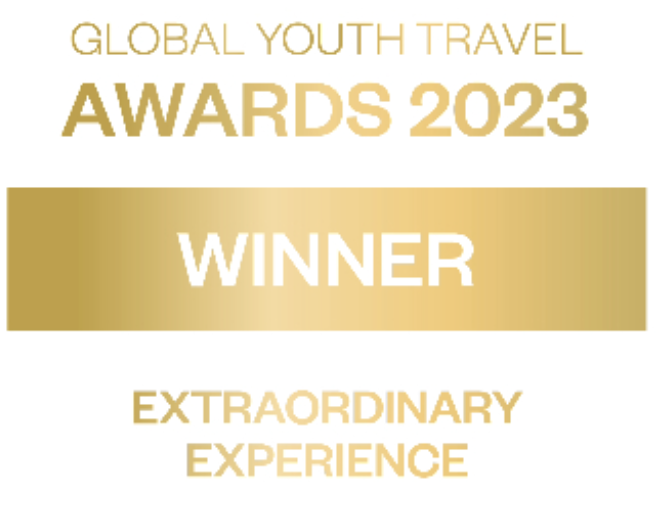
Extraordinary experience Winner
Global Youth Travel Awards, 2023
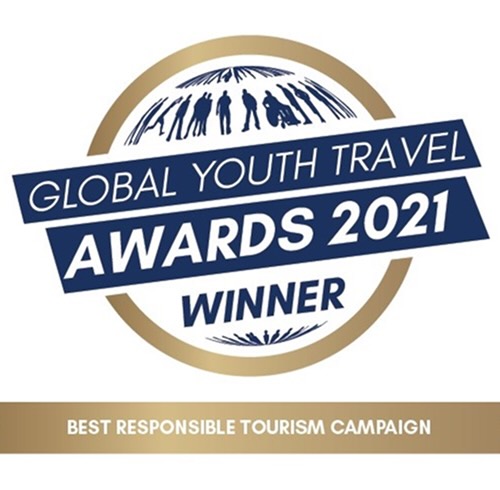
Best Responsible Tourism Campaign and Outstanding SDG Contribution, Winner
WYSE Travel Confederation's Global Youth Travel Awards, 2021

Service Excellence Award Winner
Auscontact awards, 2022 & 2021
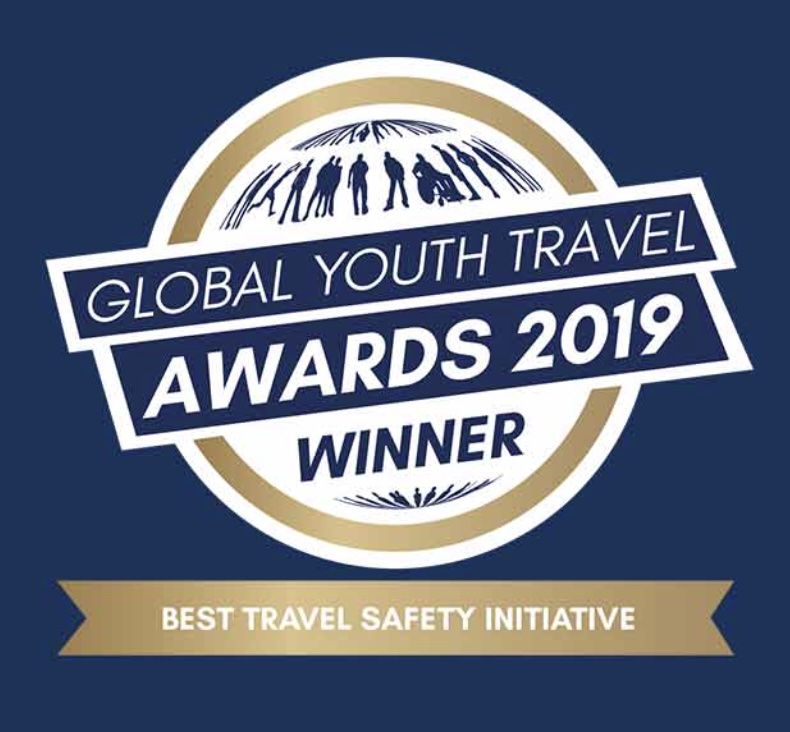
Best Travel Safety Initiative Winner
WYSE Travel Confederation’s Global Youth Travel Awards, 2019

Sea Turtle Conservation in Costa Rica video shortlisted
Animal and Wildlife category, Shorty Social Good Awards, 2019
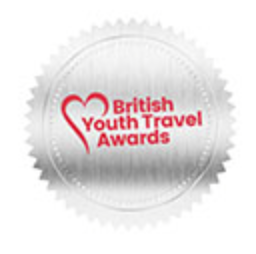
Best Use of Social/MobileMedia category, Silver Award Winner
British Youth Travel Awards, 2018
Memberships


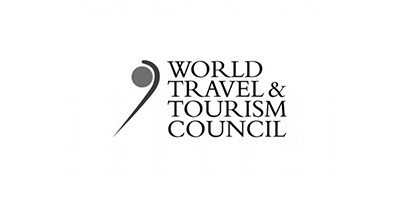

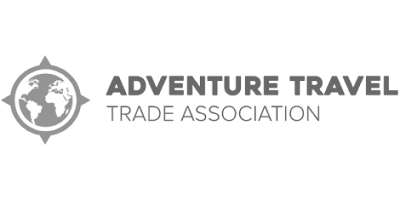

Recent reviews
Travel Insurance for Chile
Geysers, glaciers, and good times await in Chile. Learn how our travel insurance could help.
- As featured in:
As featured in:
- Do I need travel insurance for Chile?
- Travel insurance for activities in Chile
- Travel insurance for medical emergencies in Chile
- Travel insurance for lost bags in Chile
- Travel insurance for stolen items in Chile
- Travel insurance for cancelled, interrupted, or delayed trips to Chile
- Tips for Travelling to Chile from Canada
Chile offers countless opportunities to see some of the world’s most iconic natural wonders. Many Canadians enjoy visiting El Tatio - a geothermal area featuring geysers, fumaroles and other geological structures. Cruise to El Brujo Glacier, explore the amazing national parks in Patagonia, kayak to see the Marble Caves in the Aysen region, or see the Moai statues at Easter Island.
While a trip to Chile is an amazing experience, there are some things Canadians should be aware of. Our nomads have experienced it all - from lost baggage to natural disasters. We’ve learned quite a bit in our travels and we encourage you to check out our team’s tips on things to know before you visit Chile.
Do I need travel insurance for Chile?
International travel can bring all kinds of unexpected surprises - like the hidden petroglyphs that you can find in the Atacama Desert.
Some surprises are not as great though. Nobody wants to think about cancelled trips, delayed baggage and medical emergencies, but these things can happen unexpectedly. If you fall and get hurt while hiking the Guatin Canyon in the Atacama Desert, you may wish you had travel insurance for Chile.
There are different plans to select from, and when you get a quote you can compare the options to determine the best international travel insurance for your needs.
Travel insurance for activities in Chile
While you’ll have an out of this world time hiking through the desert, Chile offers so many more thrilling adventures. World Nomads covers more than 250 activities for Canadians travelling to Chile and includes things like rafting the Rio Futaleufu and rock climbing in Patagonia.
When you get a quote for your travel insurance for Chile, you’ll need to list your planned activities. You won’t be able to add or remove activities after you make your purchase, so make sure you add them all at that time. If you’re participating in an activity that isn’t listed in your policy wording, you can contact us to determine if you will be covered.
Travel insurance for medical emergencies in Chile
One of the coolest (or should we say hottest) things to see in Chile are the geysers. It’s fascinating to see the dramatic eruption of the steaming water shooting high into the air. As you can imagine though, it also comes with its own set of dangers. Although it doesn’t happen a lot, we’ve heard reports of travellers falling into geysers and being severely burned.
Always watch your step when you’re near geysers. The thick fog from the fumaroles and glare from the sun can sometimes make it difficult to see where you’re stepping. Accidents can happen and if you do get injured your Government Health Insurance Plan may only pay a small portion, if any, of your medical expenses in Chile.
If you have a medical emergency when travelling to Chile, you can call the 24/7 emergency assistance team and they can help refer you to a place that offers the level of care that you need. They can also help communicate with your Chilean medical team if there are language barriers.
If your doctor determines that it’s best for you to go home to Canada to get medical care, the repatriation coverage that is included in your travel insurance for Chile may cover the costs to get you there.
Travel insurance for lost bags in Chile
Nobody ever plans to lose their bags, but it happens. If you’re planning to trek through the Andes Mountains, you may be bringing along your new pair of hiking boots. If you get to Santiago and then realize that the airline lost your bag, the baggage coverage included in your travel insurance for Chile may reimburse you for the cost to replace your hiking boots and other belongings. When you get a quote, you can check the wording in your international travel insurance policy to get the specific details on depreciation and policy limits.
If you’re lucky, your bags just took a detour and will eventually make their way to you. Even a delayed bag can be stressful though. If this happens, you could still be reimbursed for a change of clothes and toiletries until you and your bag are reunited.
Travel insurance for stolen items in Chile
Theft is something to watch out for when you travel to Chile - especially in crowded touristy areas like Santiago and Valparaiso. Be aware of your surroundings and avoid putting anything valuable in your back pockets. You may also want to carry handbags across your body, and wear backpacks on your front.
You’ll also want to keep an eye on your bags at bus terminals, train stations, and airports. We’ve heard about organized scams where a visitor gets sprayed with something and then a “good Samaritan” points it out and offers to help. It’s really a ploy to divert your attention while someone else comes up and steals your belongings.
If anything does happen, make sure you make a police report. You’ll need that if you have to make a claim.
Travel insurance for cancelled, interrupted, or delayed trips to Chile
Sometimes you have the perfect getaway planned, but things happen that can cancel, interrupt, or delay your trip.
Chile is located on the Pacific Ring of Fire and earthquakes and volcanoes can happen anytime. The government has been known to restrict access to Conguillo National Park because of concerns about flare-ups of the Llaima volcano. If your trip is cancelled because a volcano erupts and the Canadian Government issues a travel advisory against travel to that region, your travel insurance for Chile could help you be reimbursed for non-refundable tours and hotel accommodations that you paid for in advance. You’ll need to have purchased your plan before any travel advisory has been issued though (once it erupts, it’s no longer unexpected and travel insurance doesn’t cover “known” events”).
Travel insurance could also help if you’re already on your trip and something happens. For example, you may need to go back to Canada early if an immediate family member has an unexpected medical emergency or dies.
When you’re searching for the best travel insurance for Chile, check to make sure it has coverage for trip cancellation, trip delay, and trip interruption. If it does, you could be reimbursed for unused, prepaid, non-refundable travel expenses if something unexpected happens.
Tips for Travelling to Chile from Canada
Before you leave Canada, we encourage you to check out the Canadian government’s safety warnings for Chile to review their up-to-date warnings on any advisories. Weather, safety, and political situations can change at any time, and this is where they list their up-to-date warnings on any advisories that may exist at that time.
If you purchase travel insurance for Chile, it’s a good idea to save the 24/7 Emergency Assistance phone number and your policy number in your cell phone so you don’t have to search for that if an emergency happens.
Take extra camera batteries. The worst feeling is to get set up for the perfect shot of an Andean Condor, only to find out you have a dead battery. Trust us on this one - we’ve been the ones who’ve been left with nothing but memories, and no pictures to show to our friends back home. Prepare ahead of time, and if you are making the journey to see the penguins, make sure to read up on some of our tips on how to photograph wildlife in an ethical way.
There are so many great tours that Canadian visitors can book in Chile. When you’re researching options, try to find an eco-friendly tour operator. With the vast amount of untouched natural land and waterways in Chile, it’s up to us nomads to do our part to protect it for years to come.
This is only a summary of coverage and does not include the full terms and conditions of the policy. It is important you read and understand your policy as it contains benefits, conditions, exclusions and pre-existing condition exclusions. If you do not understand your coverage, or if you have questions, just ask us.
Travel Insurance Benefits: how we can take care of you
Trip Cancellation
Been working hard for your trip?
We'll work hard to protect it.
Trip Protection
- Unexpectedly hospitalised?
- Travel buddy unfit to travel?
- Close relative suddenly dies?
We’ve got your back.
Emergency Medical Expenses
Feeling fit and healthy? What if you get sick or injured?
Take the pain out of medical or dental costs.
Emergency Medical Insurance
- Need meds quick?
- Accidentally injured?
- Suddenly sick?
We’ve got your back.
Emergency Medical Transportation
Know where the nearest hospital is?
Don’t stress, we’ll get you there quickly.
Evacuation and Repatriation
- Banged up abroad?
- Need a hospital urgently?
- Medivac home?
Help starts here.
Protect your gear
Love photography, filming or sport?
Cover your bags, tech or gear.
Protect your gear
- Passport stolen?
- Airline lost your gear?
- Bags delayed?
Help starts here.
- Emergency Overseas Medical & Dental Expenses
- Emergency Medical Evacuation & Repatriation
- Trip Cancellation or Interruption
- 24-Hour Assistance Services
- Baggage
- And more (depending on your country of residence)
24/7 emergency assistance
Whether you need medical assistance or emergency evacuation, our teams are available 24 hours a day, 7 days a week, 365 days a year before and during your trip.
Are you in need of emergency assistance right now?
Contact the team